Apple Scionwood
Welcome to our collection of apple scionwood. We grow over 130 varieties of apples and offer scions for grafting from most of them.
For filtered search - we have apples organized by categories and tags. Use the filter below to select as many categories and tags as you want to narrow down your search. For the most specific results, select just one category and multiple desired tags. Full functionality is coming soon - we are continuing to update each variety with all the correct categories and tags. Feel free to reach out with questions about specific varieties.
Categories:
Cider apples (good for hard ciders)
Dessert apples (also known as snacking apples, good for fresh eating)
Baking/saucing apples (also known as culinary apples, good for canning, preserving, baking, and cooking)
Red Flesh (red or pink flesh on the inside)
Tags:
Cold hardy (good for extreme cold or Northern climates)
Disease-resistant (has moderate to strong resistance to one or more common apple diseases)
Harvest period early, mid, or late
Heat or low-chill tolerant (good for extreme warmer or Southern climates)
Heavy producer
Pollination Groups A through E
Ordering is now open for this season. Order now for shipping between January and April 2025. Questions? Please contact Christina Fordyce at 503-930-8280 or fordycefarminc@gmail.com.
Scion wood is sold by the piece, except for some varieties that are available in bulk quantities of a 20-pack. We always seek to provide sticks that are close to 12” and pencil thickness at the base but every variety grows differently and so thickness varies.
We ship only within the United States. We do not ship internationally. Rootstock does not ship to California.
Return/Refund Policy: We do not offer returns or exchanges on scionwood or rootstock. We have a 30-day return policy on our clippers (must be unused and returned in original packaging. Return label must be requested). If we have made an error on the scionwood variety you have ordered, we will refund or replace the incorrect item. Claims for errors in your order must be presented within 30 days of receipt of your order. Claims must include a picture of the error and sent to us by email at fordycefarminc@gmail.com. Failure to assert claims within 30 days after order receipt renders this warranty null and void.

This apple originated in the Ukraine in the 1700s. It made it’s way to the U.S. in the 1800s and over the Oregon trail to Oregon in the mid-1800s among the first named varieties brought here. It’s a lovely and tasty apple that has a fair amount of disease resistance. Ours grow in an non irrigated part of the orchard and survived hot dry summers with ease. Generally they produce only enough for our use so we don’t often stock scionwood for these.

This late August apple is disease resistant, productive and vigorous. A 1930s German apple has Cox Orange Pippin and the Duchess of Oldenburg as its parents. It’s an apple with a margarita trapped inside. It’s so juicy it drips down your chin and yet it’s still firm. It’s so refreshing with its limeade flavor.
Categories: cider apple, dessert apple, baking/saucing apple
Tags: Heat/low-chill tolerant, Disease-resistant, Heavy producer, Harvest period mid, Pollination Group B

From the Netherlands of the 1850s. We’re super fans of these apples. They start out tart but age into a true nutty but intensely apple flavor. These also make a fantastic single varietal hard cider. The trees are productive and highly disease resistant. They are vigorous growers and graft easily. The apples are fantastic eaten fresh, baked or fermented. We think these should be on every homestead and in every commercial orchard.
Categories: dessert apple, cider apple, baking/saucing apple
Tags: Disease-resistant, Heavy producer, Cold hardy, Harvest period mid, Pollination Group C

Bramley’s Seedling: this is a classic English cooking apple. They are great for growers as they’re productive, vigorous trees. The apples are very resistant to disease and often grow quite large. They really are among the best apples anywhere for sauce and pies. The scion wood is hardy and fairly thick. We have bulk quantities of the scionwood. Contact us for pricing on orders over 60 pieces.
Categories: baking/saucing apple, cider apple
Tags: Disease-resistant, Heavy producer, Harvest period mid, Pollination Group D

Queener Farm has only offered Cameo apple scionwood for a couple years. For years the trees had been too scab infected to produce marketable fruit and lacked vigor. After the farm switched to a nutrient based program, they responded with gusto. The apples were near perfect and the trees thrived and grew. They also handled the “heat dome” of 2020 with temperatures reaching 115 remarkably well. They had no protection and experienced minimal sunburn and no bitterpit response. If you are in an area with little scab or you have a program for dealing with it these can be a lovely addition to your orchard.
Categories: dessert apple, baking/saucing apple
Tags: Harvest period mid, Pollination Group A

From Cornwall and introduced in 1813. They are noted for the aromatic flavor that contains a hint of clove. The word Gilliflower comes from the French word for clove.
Categories: Dessert apple
Tags: Harvest period mid, Pollination Group D, Heat/low-chill tolerant

From Geneva, New York 1898. It was bred by S.A. Bach, the author of the famous “Apples of New York.” It may be unfamiliar but it’s actually the 15th most commonly sold apple in the U.S. While these grow well in the eastern part of the country we find them to be slow growers, modest producers and not exceptional in any way. The scion is minimal and not likely to be very long or thick.
Categories: dessert apple
Tags: Pollination Group C, Disease-resistant, Harvest period mid, Cold hardy

A lovely round apple with a slight orange cast. Introduced in 1825, it’s considered the benchmark for apple flavor. They are notoriously disease prone but we've found they are easier to get nice apples from than many others with little disease resistance.
Categories: dessert apple, cider apple, baking/saucing apple
Tags: Heavy producer, Harvest period mid, Pollination Group C
These small apples are rather oval-shaped and the size of a golf ball or smaller. They are a nice deep red and have a bloom. These are sweet-sharp and a little bitter and is best used for jellies, as a sweet-sharp in ciders, or as an ornamental. (We will often use it in holiday centerpieces!) It originated in St. Petersburg, Russia in the 1890s. Its heavy pollen and long bloom period makes it an excellent pollinator for either home orchards or large scale operations.
Categories: cider apple, baking/saucing apple
Tags: Disease-resistant, Heavy producer, Harvest period mid, Cold hardy
This is famous as Thomas Jefferson’s favorite apple. It’s from New York and the early 1800s. This rich, firm fleshed apple is full flavored. Its spicy taste makes it one of our favorites, it’s susceptibility to every disease apple trees can get makes it an ongoing challenge. Dark almost orange/red apples that aren’t perfect but are delicious. These will keep and are famous for being best in late December.
Categories: dessert apple, cider apple, baking/saucing apple
Tags: Harvest period mid, Pollination Group D
A modern cross of the legendary Cox Orange Pippin with lots of the orange pippin flavor and better disease resistance. They are biennial bearers for us. We also don’t find them to be completely disease resistant though better than the Cox. From England and the 1970s.
Categories: dessert apple
Tags: Pollination Group C, Heavy producer, Harvest period mid, Cold hardy
Sweet, juicy apples that are from New Zealand in 1934. They are a cross between Red Delicious and Kidd’s Orange Red apples.
Categories: dessert apple
Tags: Heavy producer, Heat/low-chill tolerant, Harvest period mid, Pollination Group C
So red it bleeds like a beet. This is a favorite of cider makes. It’s highly scab prone but when that is controlled it produces loads of large, tart, dark red-fleshed apples. In our top-grafted experiments this one grafts easily and trees grow and produce quickly. The blooming trees are stunning. Always this red, always large, when scab is reasonably controlled and always lovely dark pink blooms. Scion tend to be large. If you’re growing for impressive red juice for cider these are the ticket they are intense and will tint any blend.
Categories: cider apple, Red Flesh
Tags: Harvest period mid
Discovered in 1790 and so loved that there is a monument to the first Golden Grimes tree at its home in West Virginia. A delicious apple that also was a favorite among cider makers and moonshiners. Still fairly common in the south. Green apples that a turn a lovely yellow. They are a mixed bag in terms of disease resistance.
Categories: cider apple, dessert apple, baking/saucing apple
Tags: Disease-resistant, Heat/low-chill tolerant, Southern US Roots, Harvest period mid, Pollination Group D
The original strain of the worlds most widely grown apple. These were “improved” to create the famous Red Delicious but we, and many others, believe that the original is a better tasting apple. It’s striped instead of solid red but it has that distinctive delicious shape. From 1870s Iowa. This is another one of the apples that handled the blazing heat of 2021, temps reaching 115, well without any protection.
Categories: dessert apple
Tags: Pollination Group D, Disease-resistant, Heat/low-chill tolerant, Harvest period mid
An apple from 1918. One of our favorites and another “trifecta apple” great for eating, baking and cider. Fans of the Holstein recommend keeping them cool until the color changes from green to yellow. These apples have a distinctive russet on the bottom that often cracks, that cracking is their only “flaw”.
Categories: dessert apple, cider apple, baking/saucing apple
Tags: disease-resistant, Harvest period mid, Pollination Group C
Honeycrisp: I refer to these as an heirloom of the future. It’s not only because they’re tasty it’s because they are fairly easy to grow in organic systems. Disease resistance is good. They can be prone to bitter pit due to calcium deficiencies, so supplementing with calcium in the orchard is helpful. Developed in Minnesota in 1960 it would already meet the 50 year mark some count for calling a plant an “heirloom”. We have bulk quantities of these.
Categories: dessert apple
Tags: Disease-resistant, Harvest period mid, Heavy producer, Pollination Group C
This variety was one of the first ones to be grown in Oregon. These are flavorful, dark red apples with a nice balance of sweetness and acidity. Fairly productive and with some disease resistance, especially in this area. There is a reason these have been grown in our region for many years.
Categories: dessert apple, baking/saucing apple
Tags: Disease-resistant, Harvest period mid, Pollination Group C
The most well-known creation of Piet de Sonnaville and not that old, released in 1949. It’s a child of the Cox Orange Pippin but with a more aromatic nature. One of our absolute favorites. We love almost everything about this apple from its overall decent disease resistance to its productivity and its amazing flavor. We’ve had good results grafting this.
Categories: dessert apple, baking/saucing apple, cider apple
Tags: Disease-resistant, Heavy producer, Cold hardy, Heat/low-chill tolerant, Harvest period mid, Pollination Group D
Introduced in the 50s from Canada. Little crab apples that are great for preserving, jelly, or even fresh eating. It is an excellent pollinator with a long bloom period. They are small, red, and sweet.
Categories: baking/saucing apple, dessert apple
Tags: Pollination Group C, Disease-resistant, Heavy producer, Harvest period mid
King: this old New Jersey variety from the 1800s is on many Willamette Valley Homesteads. When you see an old apple tree that’s over 40ft tall it’s often one of these. These have a hint of spice that makes them taste like apple pie. Their natural waxy skin helps them keep. They are somewhat scab prone.
Categories: dessert apple, baking/saucing apple
Tags: Harvest period mid, Pollination Group C
This descendant of the Cox’s Orange Pippin has that Cox flavor with other subtle flavors like anise. It’s a great fresh eating apple. Developed by Laxton Brothers Nursery in England in the 1890s. Medium apple with a green base and dark red blush. Can tend biennial but has a heavy crop in the on years.
Categories: dessert apple
Tags: Pollination Group D, Disease-resistant, Heavy producer, Harvest period mid, Cold hardy
This is an apple released from New York in 1978. It’s disease and pest resistance is amazing. I’ve known trees that were never sprayed, hardly pruned and generally ignored that nonetheless produce beautiful apples every year. These apples are wonderful fresh eating and ripen in September. This is the best apple for novice apple growers.
Categories: baking/saucing apple, dessert apple
Tags: Disease-resistant, Heavy producer, Heat/low-chill tolerant, Pollination Group B, Harvest period mid
These well known traditional apples are popular for a reason. Their bright red skin, tender white flesh and aromatic, sweet, tart flavor makes them a favorite. We wish we had the kind of cool nights needed to bring out their best flavors in the fall but some years they’re amazing even here. Somewhat scab prone in wet climates. Tends somewhat biennial.
Categories: cider apple, dessert apple
Tags: Pollination Group B, Disease-resistant, Harvest period mid, Cold hardy
This apple of unknown parentage originated on the farm of General Stephen Gardner in Worcester County in Massachusetts. It’s biennial and wants very specific growing conditions. We only have one tree in the entire orchard so don’t often have the scionwood for sale. It’s delicious for fresh eating and also known to be good in a pie.
Categories: dessert apple, baking/saucing apple
Tags: Harvest period mid, Cold hardy, Pollination Group D
Well known and extremely red, red fleshed apple native to Kyrgyzstan. These trees are however, very disease prone and slow growing. We have limited scions and cannot guarantee they do not carry scab. That said, we have used these in our own top-grafting with some success and find the top-grafted trees are much faster growing than those on rootstock.
Categories: cider apple, Red Flesh
Tags: Heat/low-chill tolerant, Harvest period mid
Heirloom variety from the 18th century, may have originated in France but it is unclear. Though it is a favorite French dessert apple. Lightly russeted, good flavor with notes of honey and nuttiness. Also known as Winter Ribston. Good disease-resistance except it is susceptible to fire blight.
Categories: dessert apple, baking/saucing apple
Tags: Harvest period mid, Pollination Group E, Disease-resistant

Queen Cox: the Queen Cox is actually a “sport” of the Cox Orange Pippin. That means it’s a mutation propagated from a cutting of a Cox Orange Pippin. We find our Queen Cox trees ripen slightly ahead of our Cox Orange Pippin and the apples are bigger and seem to be less disease prone. Yet, they still seem to have all of that famous Cox Orange Pippin flavor.
Categories: cider apple, dessert apple
Tags: Disease-resistant, Harvest period mid

A child of Cox Orange Pippin and Golden Delicious it has the flavor of cox and a really ripe golden, which is amazing. It has the disease proneness of both and then some. They are especially prone to late season fungal infections. They need skillful pruning, thinning and a spray program we have not yet perfected. They do graft easily for us. We have these in bulk quantities.
Categories: dessert apple
Tags: Pollination Group C, Heat/low-chill tolerant, Harvest period mid

Sansa apples were developed in Japan in the 1970s. A nice, sweet, crunchy apple with a hint of watermelon. Not a lot of intensity. These have a reasonable amount of disease resistance but must be aggressively thinned to develop size. They are mid to late season apples.
Categories: dessert apple
Tags: Pollination Group C, Disease-resistant, Harvest period mid

A large, modern, Japanese apple that was released in 1973. We find these highly disease prone and so have little experience with the actual apples.
Categories: dessert apple
Tags: Pollination Group D, Harvest period mid
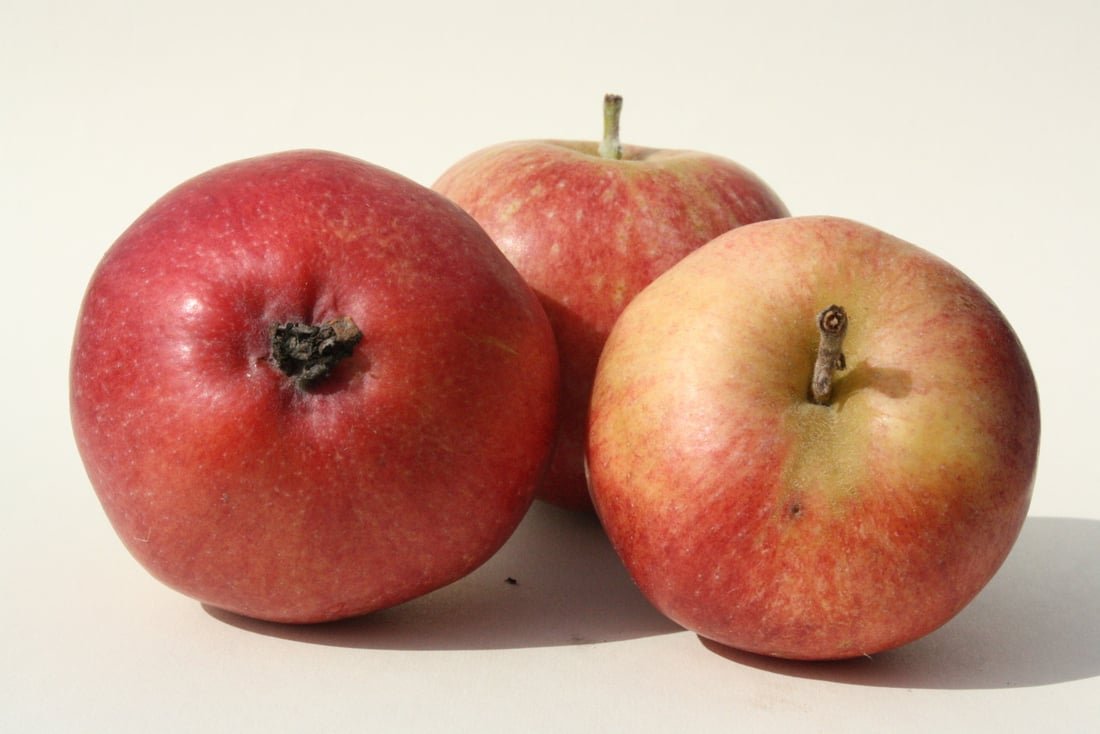
Also known as Wickson Crab. This is an Albert Etter variety. Tart, reddish, and striped, the Wickson parentage is a little obscure, but may be a cross between the Esopus Spitzenburg and the Newtown Pippin. Favored for crab apple jellies because of the high pectin content. It blossoms early so it is a good pollinator for other apples.
Categories: baking/saucing apple, dessert apple, cider apple
Tags: Heavy producer, Pollination Group C, Harvest period mid
Airlie Red Flesh
Akane
Alexander (Aporte)
Alkmene
Almata, (red flesh)
Ambrosia
Amere de Berthecourt
Anna
Arkansas Black
Ashmead's Kernel
Baldwin
Belle de Boskoop
Berner Rosen
Blairmont
Blenheim Orange
Blue Pearmain
Braeburn
Bramley Seedling
Calville Blanc d'Hiver
Cameo
Centennial
Chehalis
Coles Quince
Corail (Pinova & Pinata)
Cornish Gillflower
Cortland
Cox's Orange Pippin
Dabinett
Devonshire Crimson Queen
Discovery
Dolgo
Duchess of Oldenberg
Dumelow's Seedling
Empire
Enterprise
Egremont Russet
Erwin Bauer
Esopus Spitzenberg
Fiesta
Foxwhelp/Fauxwhelp
Fuji - jubilee
Fuji - yataka
Gala
Giant Russian Crab
Gingergold
Glockenapfel
Gold Rush
Golden Delicious
Golden Noble
Granny Smith
Gravenstein
Grimes Golden
Hauer Pippin
Hawkeye
Herefordshire Redstreak
Hidden Rose, (red flesh)
Holstein
Honeycrisp
Hubbardston Nonsuch
Jonagold
Jonathan
Karmijn de Sonnaville
Kerr Crab
King of Tompkins
Kingston Black
Knobbed Russet
Lady
Lady Williams
Laxton Superb
Liberty
Lodi
Lubsk Queen
Lyman's Large Summer
Major Apple
McIntosh
Melrose
Mollie’s Delicious
Monark
Mother
Muscadet de Dieppe
Mutsu
Newtown Pippin
Niedzwetzkyana (red flesh)
Northern Spy
Opalescent
Oriole
Orleans Reinette
Parentene
Peasgood Nonsuch
Pierce Pasture
Pink Pearl
Porter’s Perfection
Queen Bee
Queen Cox
Queener Donut
Red Gravenstein
Red Spy
Redfree
Reverend W. Wilkes
Ribston Pippin
Rubinette
Rusty Coat
Sansa
Scarlet Surprise
Sekai Ichi
Senshu
St. Edmunds Pippin
Starr
Summer Rambo
Sundance
Suncrisp
Surprise
Sweet Delicious
Tremblett's Bitter
Washed Russet
Whitney crab
Wickson
Williams Pride
Winter Red Flesh
Wynoochee Early
Yarlington Mill
Yellow Bellflower
York
Zabergau Reinette
20 oz.








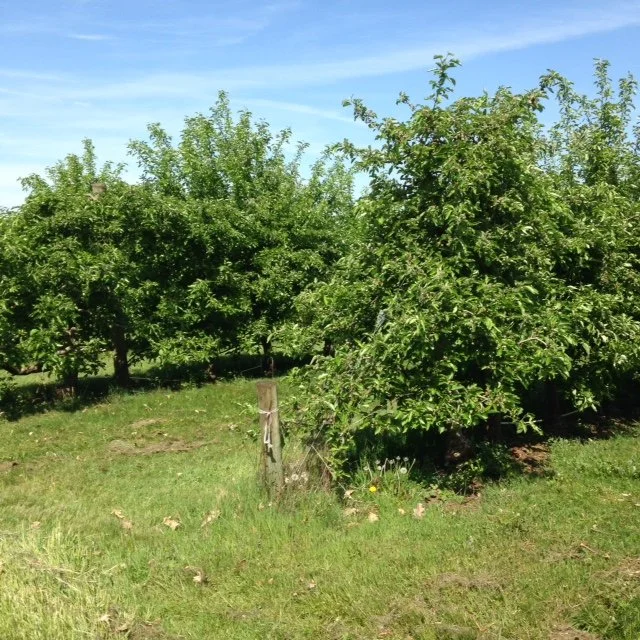




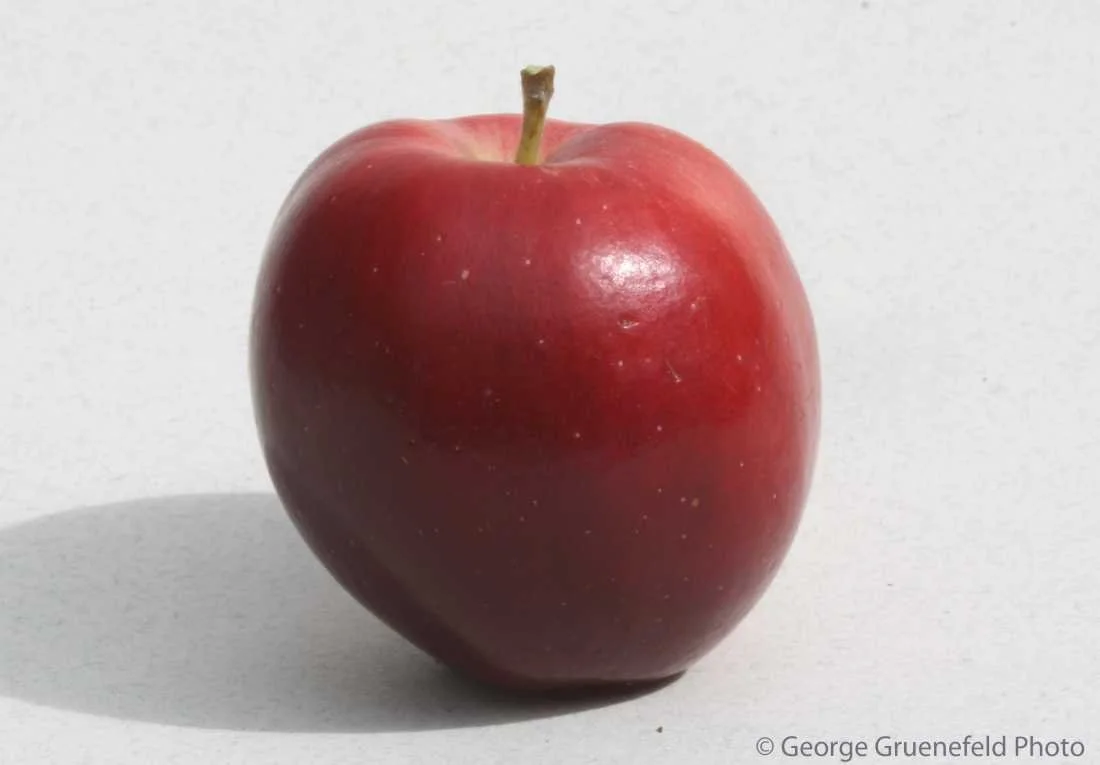




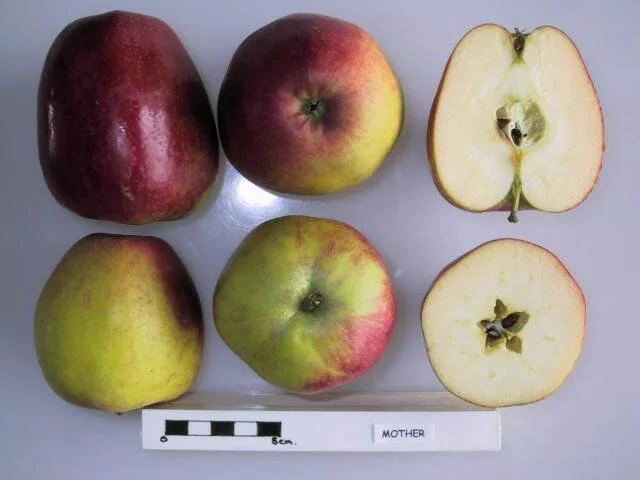
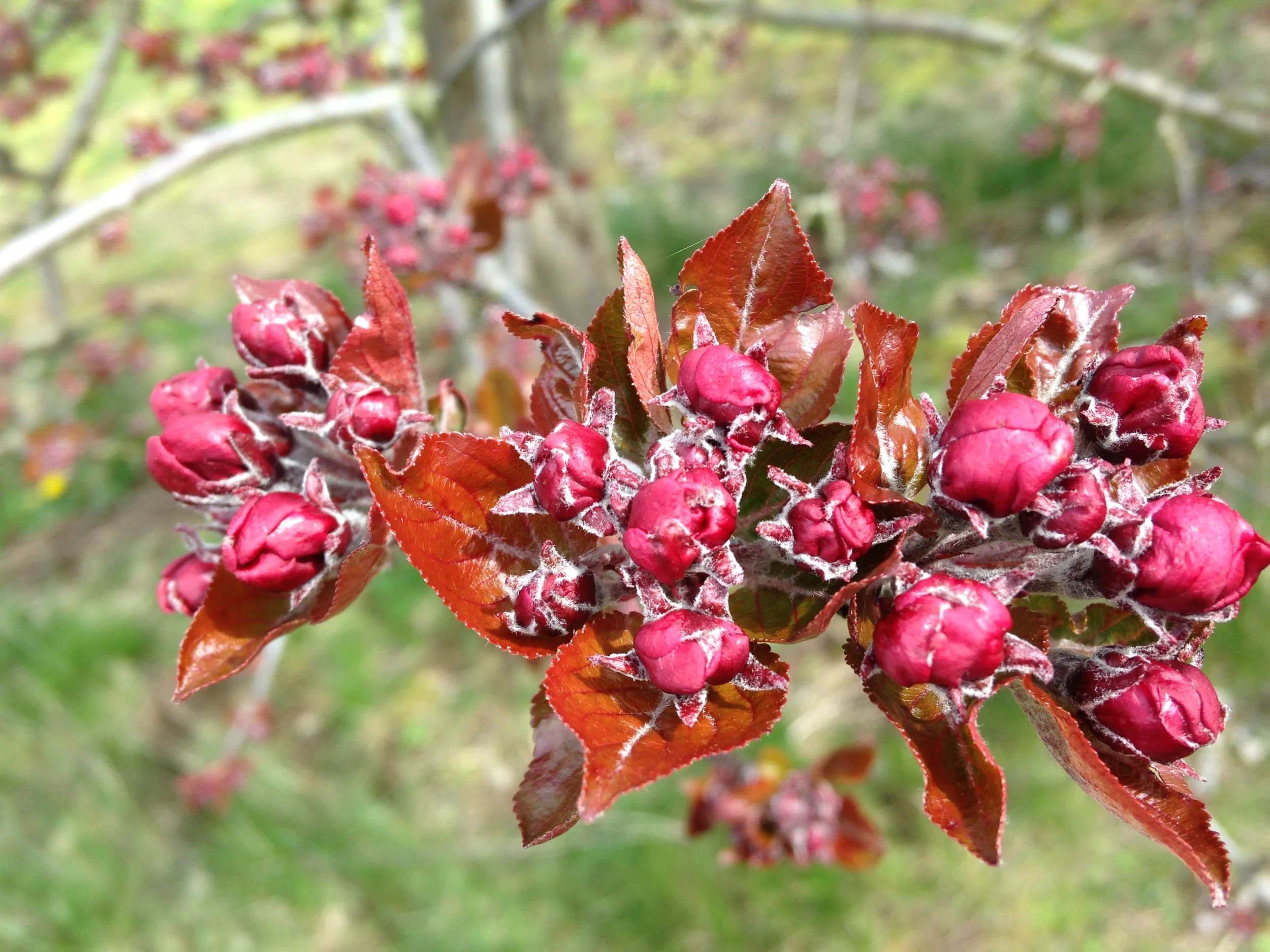

This apple was developed in Japan in the mid-1900s - also known as Tohoku 3. These red apples are on the smaller side but packed with flavor when harvested just right. They hang well on the tree so it’s best to harvest as late as possible for enhanced flavor. They don’t keep as long in cold storage so are best for eating right away. Great for fresh eating, this apple is also fantastic in sauces, pies, and dried. Late harvest period.
Note: this apple scionwood is harvested from Fordyce Farm inc. that we operate in Salem, OR. Fordyce Farm inc. is not certified organic.
Categories: dessert apple, baking/saucing apple
Tags: Disease-resistant, Harvest period mid, Pollination Group D